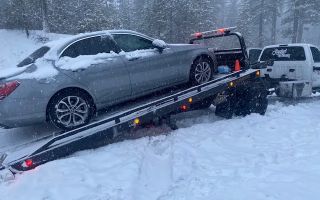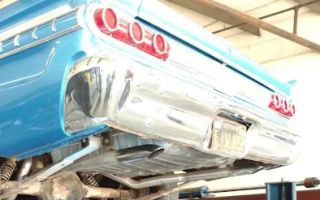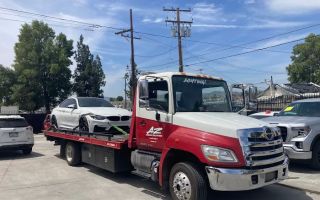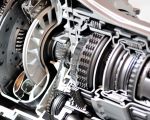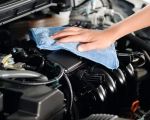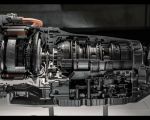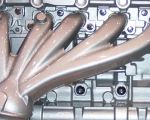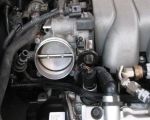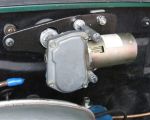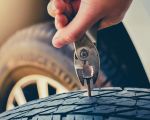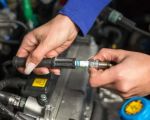How to Fix a Car That Has a Broken Windshield Wiper
Having a broken windshield wiper is not only an annoying issue, but it can also be a dangerous one, especially during heavy rain or snow. I’ve found myself in this frustrating situation more than once, where my wipers simply stopped working at the most inconvenient times. The first time it happened to me, I was driving in the middle of a torrential downpour, and my wipers failed. I couldn't see clearly, and it made the entire situation feel chaotic. Thankfully, I managed to get to a safe place, and after a quick search, I realized that fixing a broken windshield wiper wasn’t as complicated as I initially thought. In this article, I’ll walk you through everything you need to know about fixing a windshield wiper, from diagnosing the issue to performing a DIY fix, saving you time and money.
Before we dive into the steps, let me tell you that windshield wipers are a relatively simple mechanism, but they can malfunction for a variety of reasons. From a snapped wiper blade to issues with the motor or linkage, there are a few key culprits that could be causing the malfunction. In my case, it was a broken wiper blade, but many times, the issue can be traced to something deeper in the system, such as the motor or even a blown fuse.
Let’s go over the most common causes for a broken windshield wiper and how to diagnose and fix them. Whether you’re dealing with a snapped blade or a malfunctioning motor, I’ll guide you through it step by step, so you can handle the repair like a pro.
1. Diagnosing the Problem with Your Wiper
The first step in fixing a broken windshield wiper is to figure out what exactly is wrong. I always recommend checking the blades first since that’s the easiest and most common issue. Here are some signs that your wiper blades might be the culprit:
- The wipers leave streaks or miss spots while wiping.
- The blades are visibly cracked, torn, or damaged.
- The wipers make squeaking or screeching sounds when in use.
If you notice any of these signs, it’s likely that the wiper blades themselves are damaged and need replacing. But if the wipers aren’t moving at all, or they only move intermittently, then the problem might be more serious and involve the wiper motor or linkage.
2. Checking the Wiper Motor
If the blades are in good condition but the wipers aren't moving, it could be a problem with the wiper motor. The motor is what powers the wiper mechanism, so if it’s malfunctioning, the wipers won’t work. I had a situation where my wipers simply stopped in the middle of a rainstorm, and the motor was the issue. Here's how you can check it:
First, try turning the wipers on and listen for any sounds from the motor. If you hear a humming or grinding sound but the wipers don’t move, it might indicate that the motor is stuck or malfunctioning. If there’s no sound at all, the motor may have burned out. To test the motor:
- Turn the wiper switch to the on position.
- Check if the motor is getting power by using a multimeter to measure the voltage at the motor’s wiring connector.
- If there’s no power, it could be a blown fuse or wiring issue, which will require further inspection.
If the motor is working but the wipers still aren’t moving, it could be an issue with the linkage, which I’ll cover next.
3. Inspecting the Wiper Linkage
The wiper linkage is the system that connects the wiper motor to the blades, allowing the wipers to move back and forth. If this linkage is damaged, your wipers won’t function properly. I once had a problem where the wiper motor was fine, but the linkage had come loose, causing the blades to stop moving. Here’s how you can check the linkage:
- Open the hood of your car and locate the wiper motor and linkage, usually near the base of the windshield.
- Manually move the wiper arms to see if the linkage moves. If it doesn’t, the linkage might be disconnected or broken.
- Inspect the linkage arms for any visible damage or looseness. If you find broken or worn parts, they will need to be replaced.
Replacing the linkage can be a more involved task, as it often requires disassembling parts of the car. If the problem lies with the linkage, you may want to consult a professional mechanic or take the car to a repair shop for assistance.
4. Replacing the Wiper Blades
If the issue is simply with the wiper blades themselves, replacing them is a quick and easy fix. I’ve done this several times, and it only takes about 10 minutes. Here’s how to replace the wiper blades:
- Lift the wiper arm away from the windshield.
- Press the small tab on the wiper blade to release it from the wiper arm.
- Slide the old blade off and attach the new blade by sliding it onto the wiper arm until it clicks into place.
- Lower the wiper arm back down and test the new blades to ensure they work correctly.
Replacing the blades is one of the easiest repairs you can do yourself, and I recommend doing it at least once a year to keep your wipers in top condition. Many auto parts stores offer wiper blade replacement services, or you can purchase the blades and install them yourself at home.
5. Dealing with Electrical Issues and Fuses
If none of the previous steps resolve the issue, the problem could be electrical, often related to fuses or wiring. If your wipers aren’t working at all, it’s a good idea to check the wiper fuse in the fuse box. I’ve had a situation where the wipers suddenly stopped working, and a simple fuse replacement got them back up and running. Here’s how you can check the fuse:
- Locate the fuse box, usually found under the dashboard or in the engine bay.
- Find the fuse labeled for the wipers in the fuse box diagram.
- Remove the fuse and check if it’s blown. A blown fuse will have a broken filament inside.
- If the fuse is blown, replace it with a new fuse of the same amperage and check if the wipers work.
If the fuse is fine but the wipers still don’t work, the issue might be with the wiring or electrical connections, and you may need to consult a professional mechanic.
6. When to Call a Professional
While many issues with windshield wipers can be fixed at home, there are times when it’s best to call in a professional. If the problem is electrical or if you’re dealing with a complex issue like a broken wiper linkage, it’s a good idea to take your car to a mechanic. I’ve learned from experience that trying to fix something beyond my skill set can lead to more problems, so don’t hesitate to reach out for help when necessary.
One of the best things you can do to prevent wiper issues is regular maintenance. Clean your windshield regularly to prevent dirt buildup on the blades, and inspect your wipers every few months for signs of wear. This proactive approach can help you avoid emergencies where your wipers suddenly stop working.
If you need a quick fix or professional help with your vehicle's wipers or any other mechanical issues, I highly recommend checking out services like Rescue & Towing for roadside assistance and repairs. Their team of professionals can provide immediate help for any emergency you might face, ensuring you're always prepared for the unexpected.








